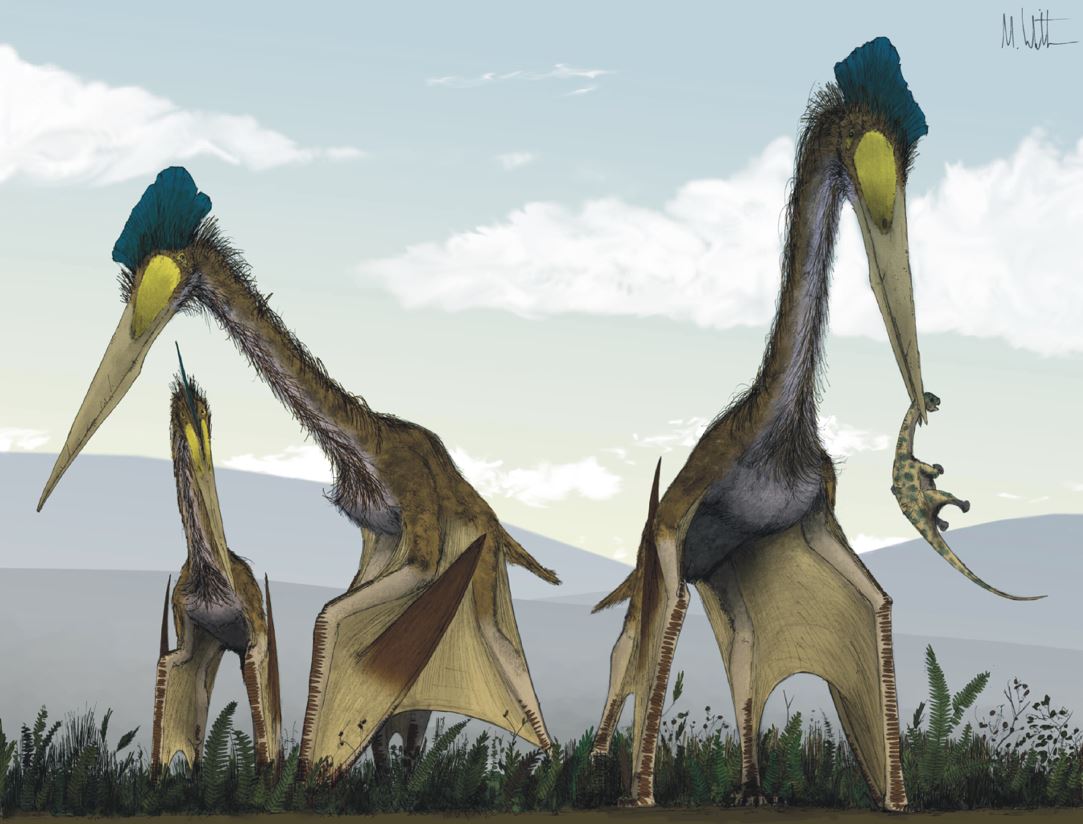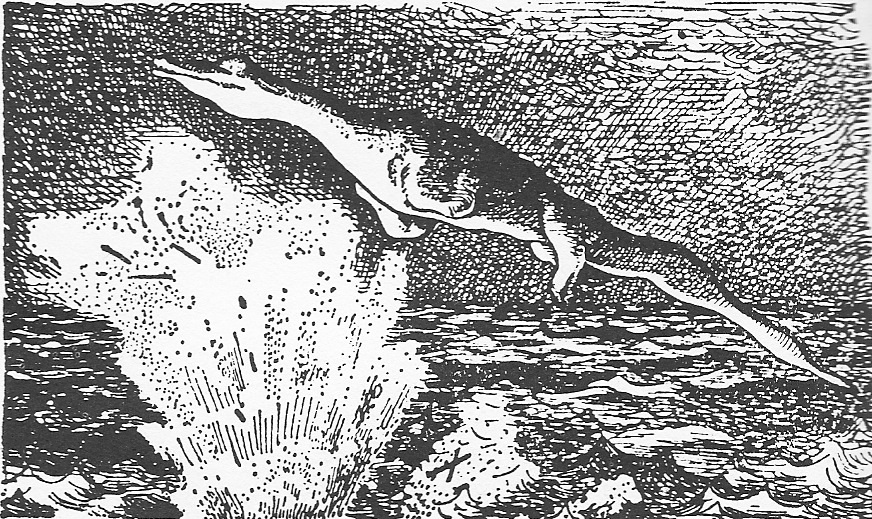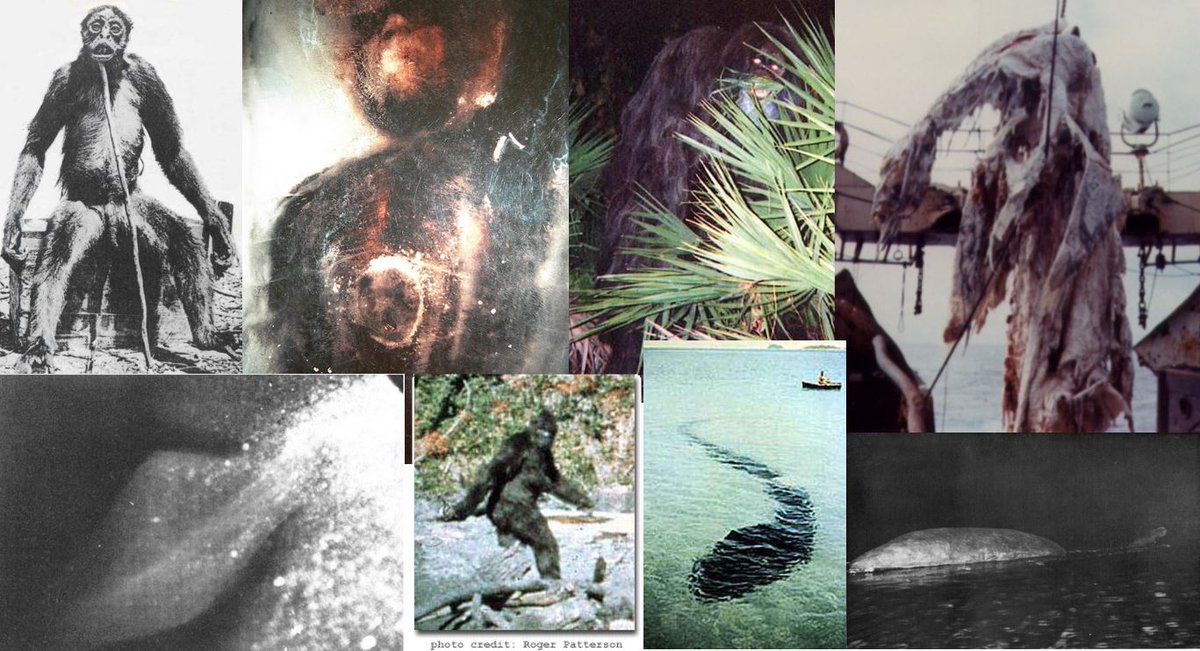
Welcome to another of my #LochNessMonster threads. This time we’re looking at the MOST FAMOUS #NESSIE PHOTO OF THEM ALL. Namely, the so-called Surgeon’s Photo, or Wilson Photo, of April 1934. Follow the thread – there’s a lot to say! [attached, another of my childhood drawings]. 


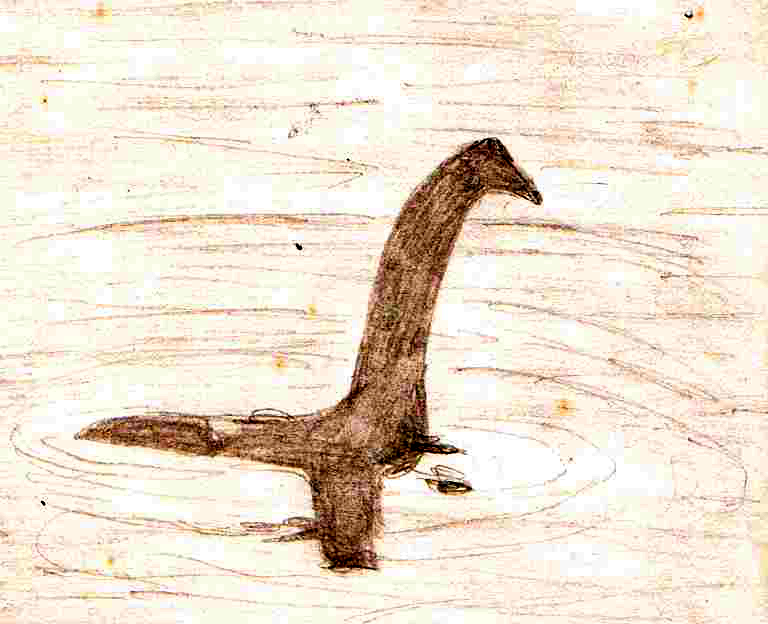
The ‘Wilson Photo’ (the name I’ll use throughout) shows a dark head and head, seemingly silhouetted against the grey surface of the loch. There are ripples and waves and concentric ripples around the monster....
There are other disturbances on the water too – here’s a diagram produced by Tim Dinsdale in 1961… #LochNessMonster #nessie 
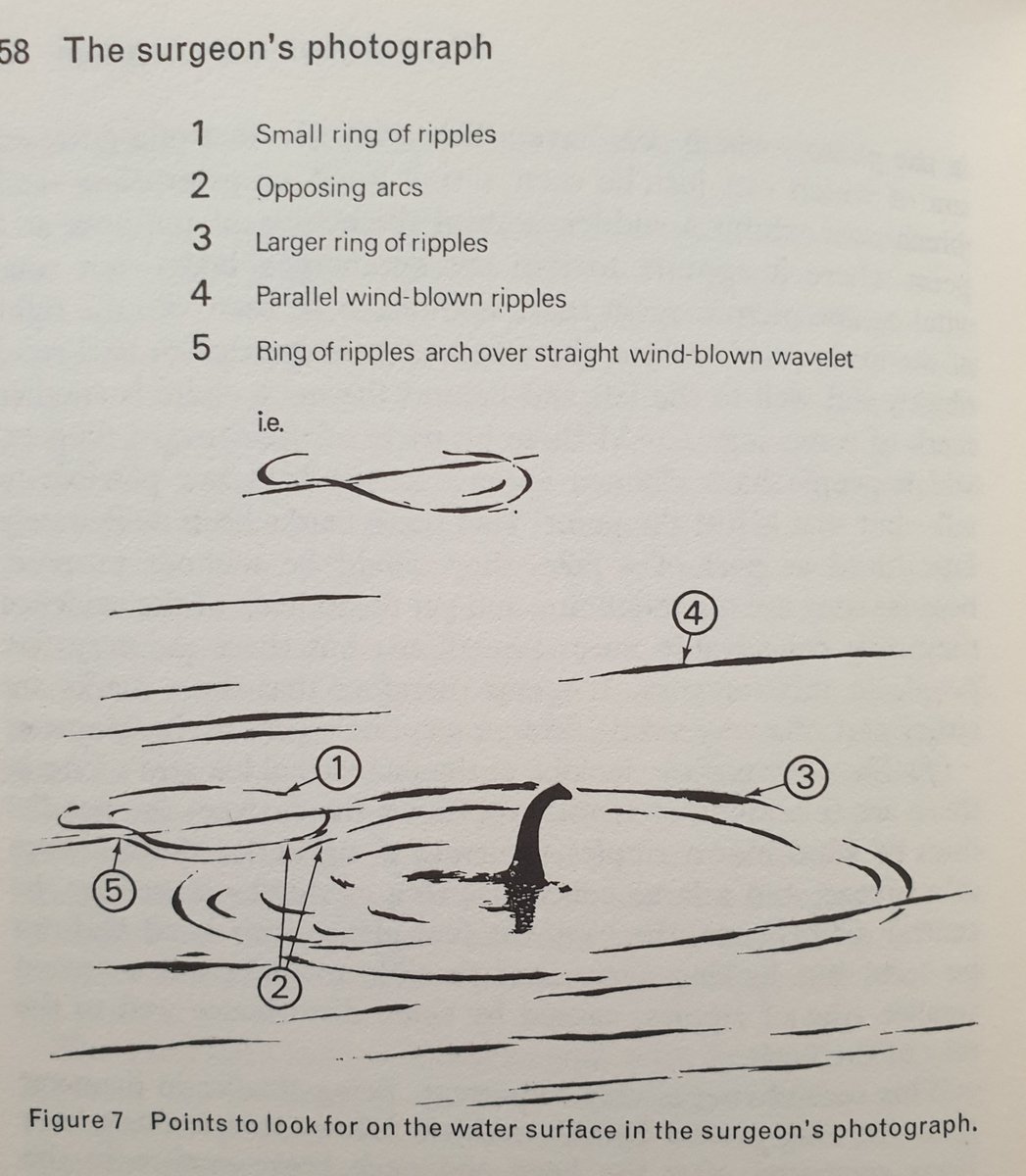
The alleged photographer (we’ll come back to this point) was London-based gynaecologist Lt. Col. Robert Kenneth Wilson MA, MB, ChB Camb, FRCS, dubbed ‘the surgeon’ in the newspapers of the 1930s. Wilson died in Australia in 1989. 



He and… a friend (an anonymous lady-friend, but we don’t need to worry about that) were on holiday, driving to Inverness, when they stopped for a break...
At times, Wilson denied knowingly taking a photo of the monster, but in a 1955 interview he did state that he saw it and rushed back to the car to grab his camera.
The photo is supposed to have been taken on April 19th 1934 (though some sources say April 1st). In 1934, Wilson said the photo was taken at midday, but in 1955 he said it was taken between 7 and 7.30am...
Wilson was inconsistent on the location from which the photo was taken, at best he said he was unable to locate the exact spot “within a mile”.
The photo was a sensation when published by the Daily Mail on April 21st 1934 (not May 21st as stated in some sources) and was immediately dubbed the ‘Surgeon’s Photo’ (I guess they couldn’t say ‘Gynaecologist’s Photo’). 

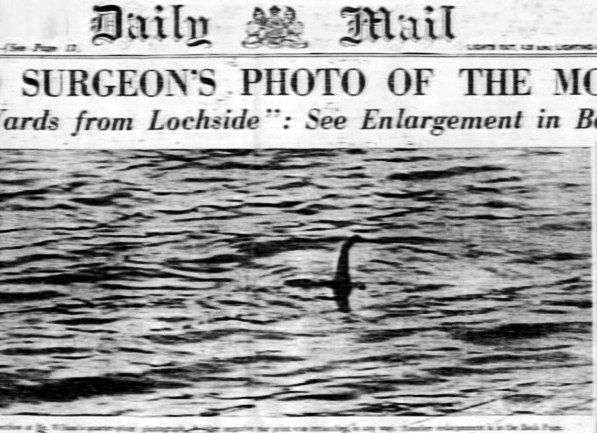

It’s famous enough that it’s appeared on several book covers and has been discussed and evaluated in virtually every single one of the many, many books devoted to the #LochNessMonster… 







The version of the image we usually see is heavily cropped relative to the original. The original version shows the monster surrounded by a vast expanse of water and even shows some of the opposite shore… 

This uncropped version was missing for about 50 years before uncropped versions were discovered in the 1980s. One – a very tattered, folded version – was discovered in 1984 by Loch Ness investigator Steuart Campbell at Associated Newspapers... 
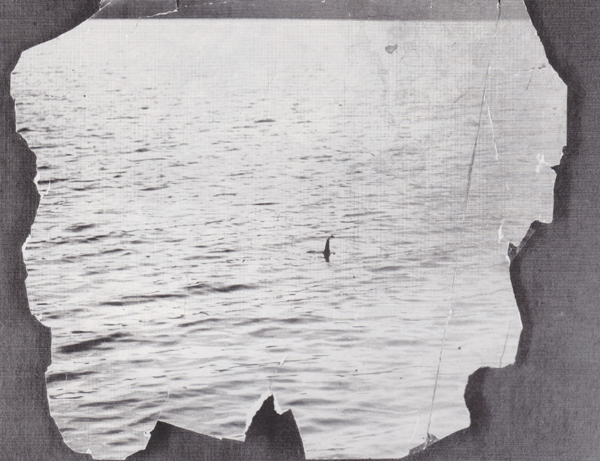
... and a second one (in better condition) was discovered by Alastair Boyd in 1987 (more on Boyd later).
To #Nessie believers, the Wilson Photo shows an object consistent with a view of Nessie as a giant vertebrate, probably a living plesiosaur.... 

Frank Holiday – who thought that Nessie was a giant descendant of the Carboniferous animal Tullimonstrum – pointed to the ‘similarity’ between the object and ancient depictions of serpents and monsters. Ok Frank. 
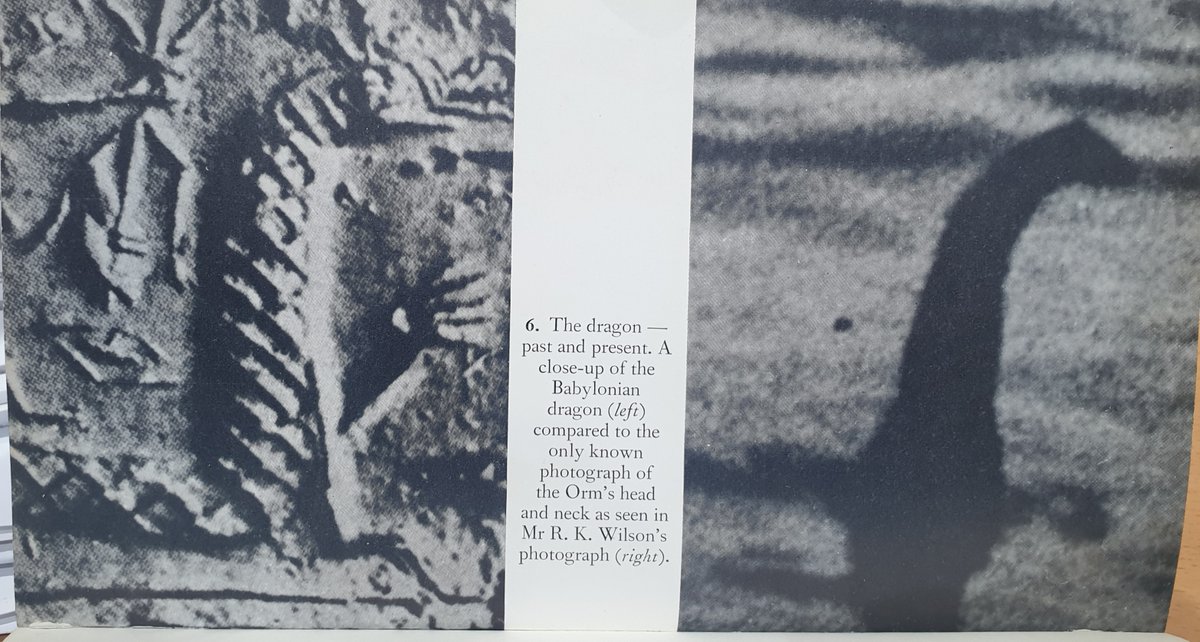
A few writers – mostly those trying to dismiss the photo – have claimed that the Wilson Photo might show driftwood, the tail of a diving otter, or the head of a surfacing waterbird. I don’t buy the otter or bird explanations since it simply doesn’t look like those things…
There’s no indication of movement, the curve at the head is wrong for an otter tail or a bird’s head and neck, and the proportions are off for a bird (all the candidates – cormorants, divers, grebes – have a longer head. Roy Mackal suggested a goose but that doesn’t work either). 
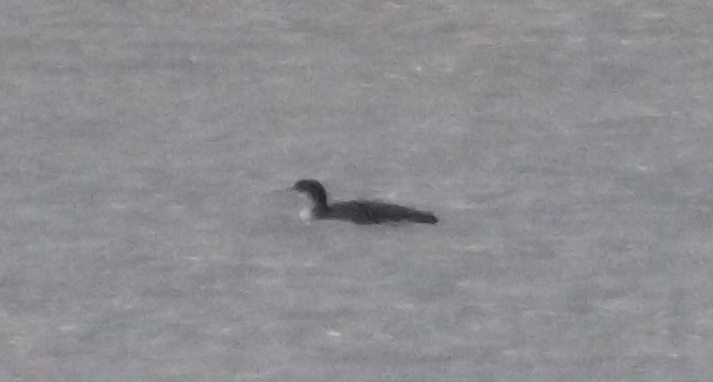
(that previous photo was a Great northern diver I photographed at distance. Note how its proportions are not in the least bit like the object in the Wilson Photo) #Nessie
More radical is the suggestion that it might be the dorsal fin of a whale, an idea mentioned informally here and there (including by famed explorer Roy Chapman Andrews in 1934) and suggested seriously by David and Melba Caldwell in an article of 1970... 

It actually doesn’t look like a whale’s fin at all, plus it looks too small. There IS a #Nessie photo that looks a lot like a whale fin – the F. C. Adams photo, also of 1934 – but the circumstances of where it was taken is hazy at best. It wasn’t definitely taken in #LochNess. 
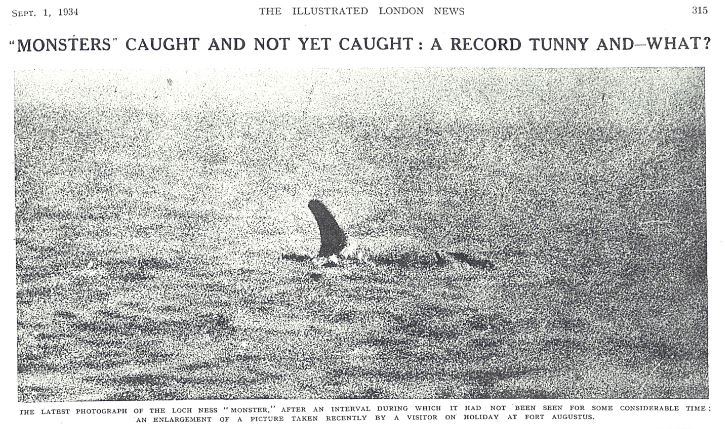
Going back to the Wilson photo, there’s a 2nd photo, which supposedly shows the object submerging. It’s pretty poor and has rarely been reproduced, and it wasn’t published until 1957 when Constance Whyte included it in her highly influential book More Than a Legend… 

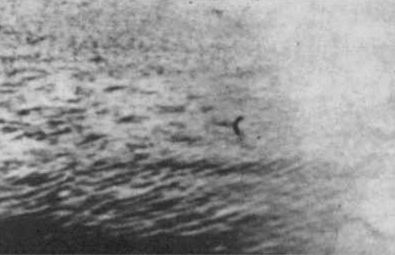

You might doubt whether the 2nd photo really shows the same object as the first since just about everything is different, including the look of the water and the shape of the monster’s ‘head’.
The object in the Wilson Photo looks small to me, too small to be a ‘monster’. But is this correct?
A 1987 analysis by Paul LeBlond and Michael Collins of wave size in the image concluded that the object was 1.2m tall, which is surprisingly big. I’m no expert on wave analysis, but I’m suspicious of this result and think that the conclusions are wrong... 

... Based on the look of the ripples, it looks more likely that the object is something like 30 cm tall – tiny! And most modern authors agree that the object is small. This small size is relevant for the idea that it was hoaxed, on which read on…
During the early 1990s, the Wilson Photo became newsworthy again. Christian Spurling, near death in 1993, supposedly confessed the ‘real’ story to researchers David Martin (a zoologist and teacher) and Alastair Boyd (an amateur investigator). 


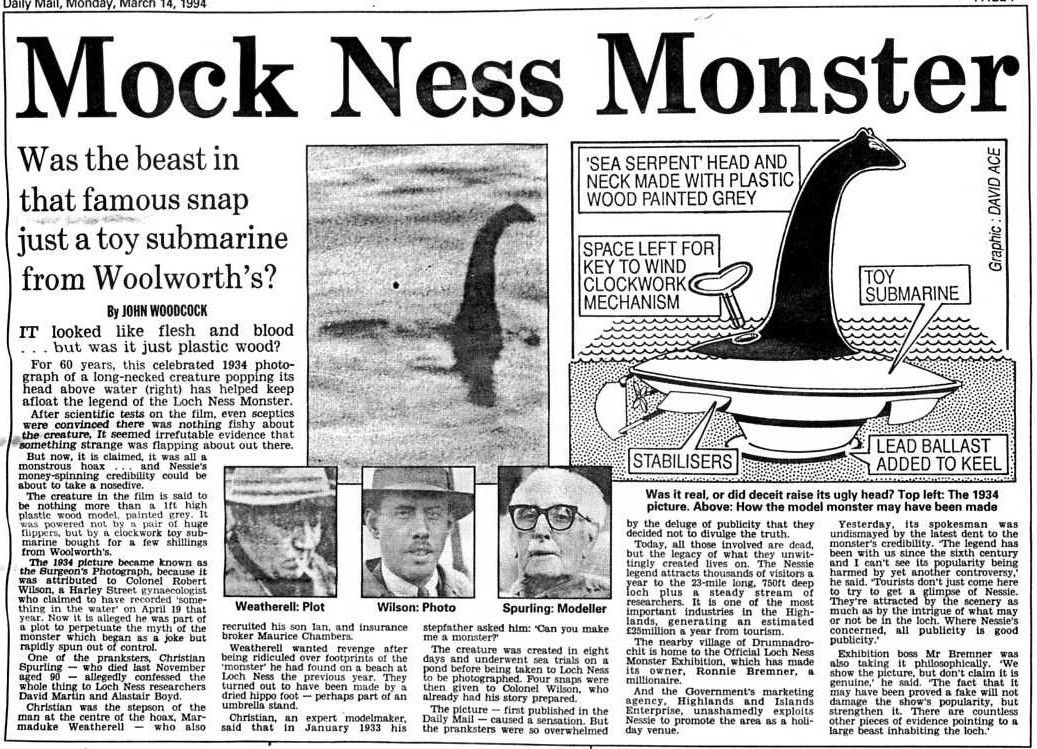
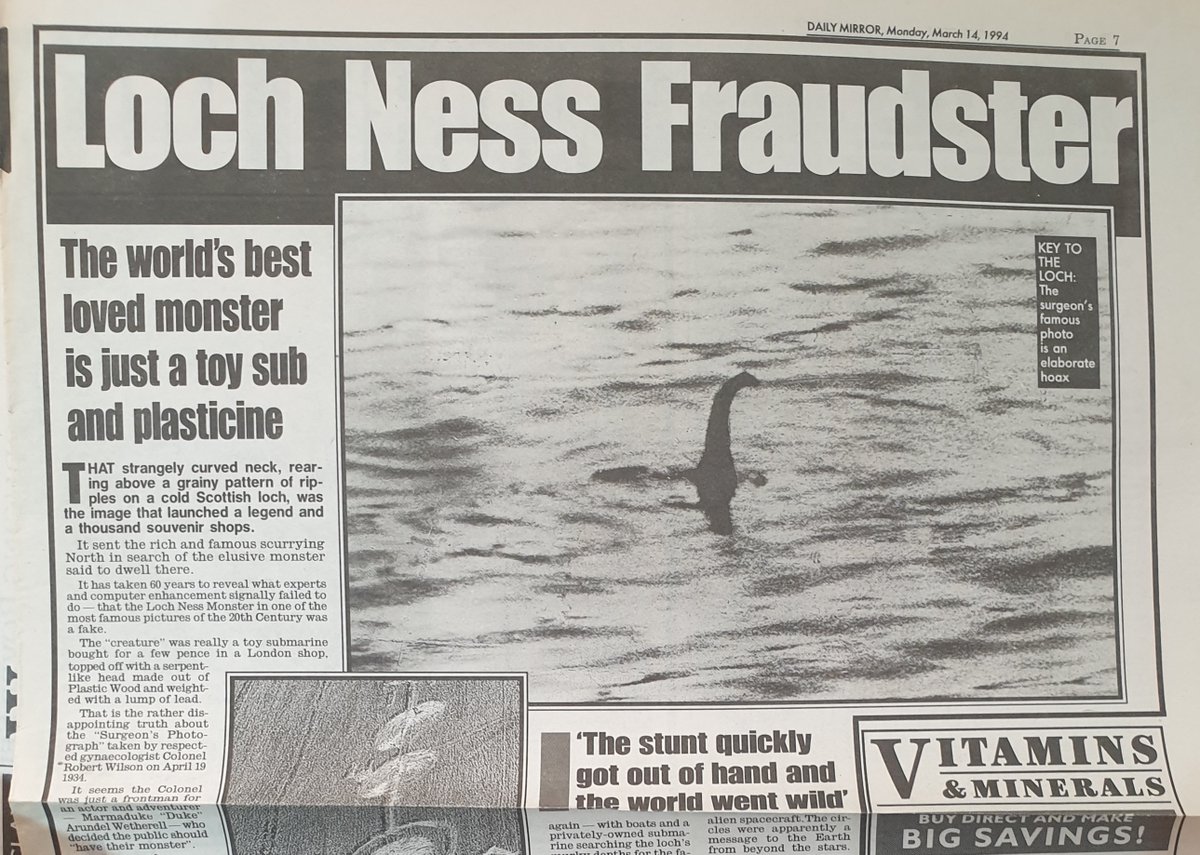
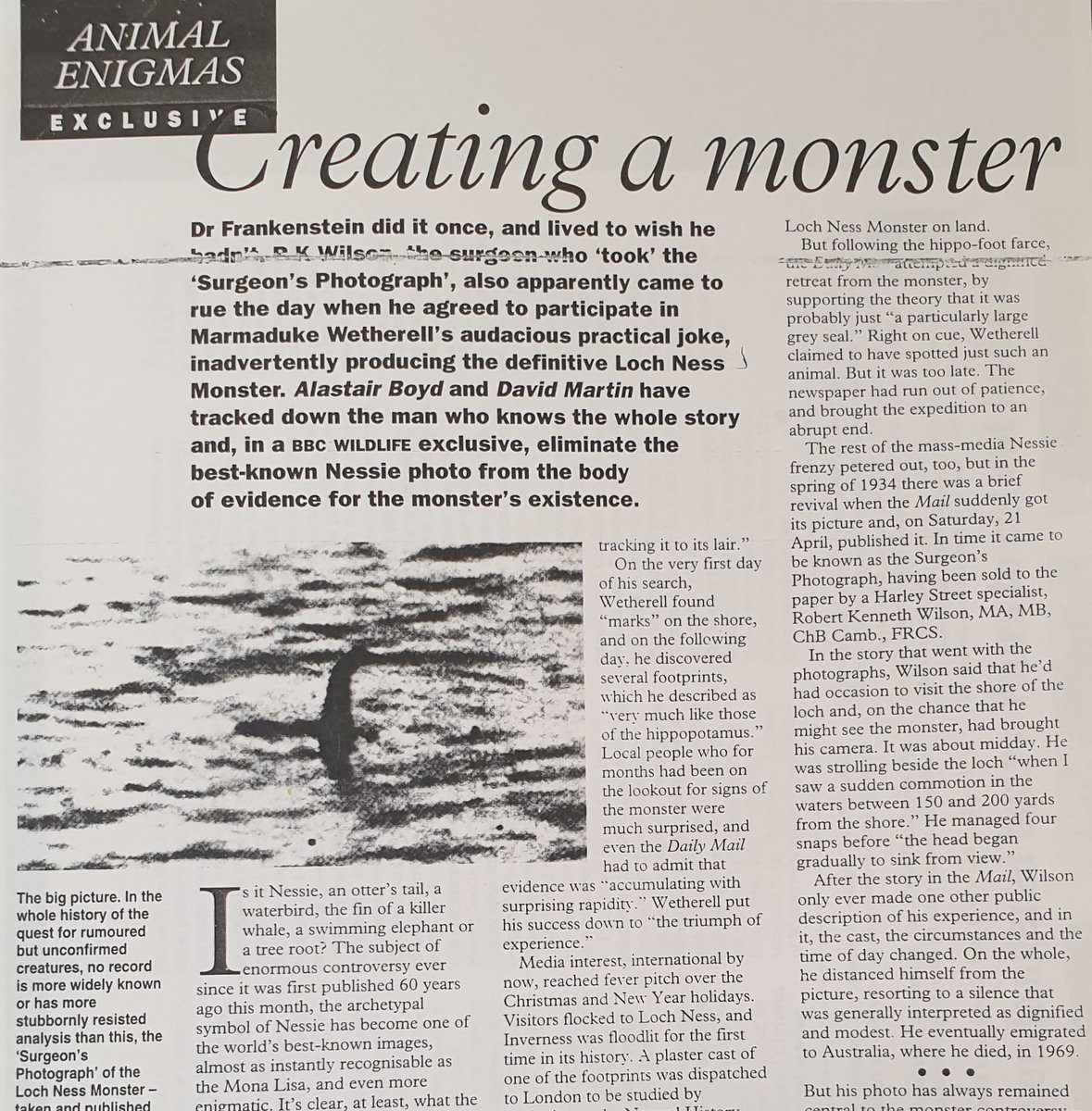
Spurling claimed that he’d worked with his late step-brother Ian Wetherell and step-father Marmaduke ‘Duke’ Wetherell to create a model monster (mouldable ‘plastic wood’ atop a clockwork submarine toy), stage a photo, and thereby dupe the Daily Mail into falling for a hoax. 
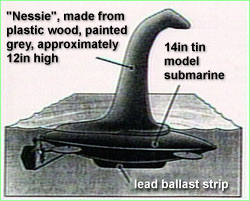
According to Spurling, Duke led this campaign due to a vendetta against the Daily Mail. In 1934, Duke used a hippo foot (modified for use as an ashtray) to make fake #Nessie footprints, reported these as a valid discovery, and expected the Daily Mail to go along with it... 


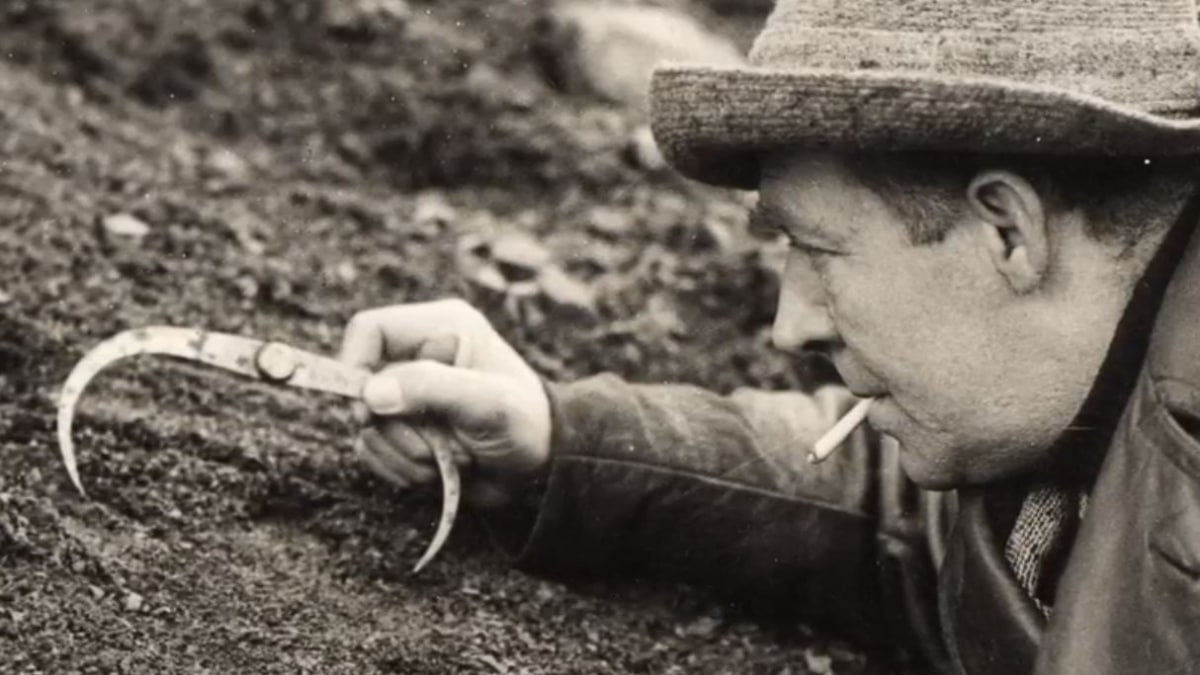
But they didn’t. They caved to pressure, stopped promoting Nessie, and stopped using Duke as their ‘man in the field’. By early 1934, the Dail Mail was pushing the idea that #Nessie was a big seal...
Duke wanted in and even claimed a giant Loch Ness seal sighting himself. Also, a tangent here…
Duke interacted with young Nessie witness Arthur Grant; on 5th January 1934, Grant claimed to see a seal-like #Nessie on land while riding on his bike at night, and there are even suggestions that Grant and Duke were conspiring together.
This has mostly been ignored. Indeed, most sources which discuss Grant’s sightings use a cropped photo so that Duke is excluded. Incidentally, there’s some fun artwork depicting Grant’s encounter… #LochNessMonster #cryptozoology 



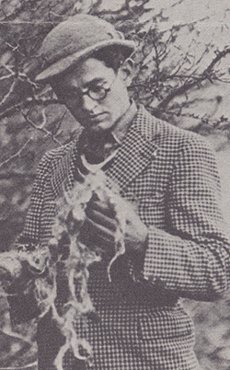

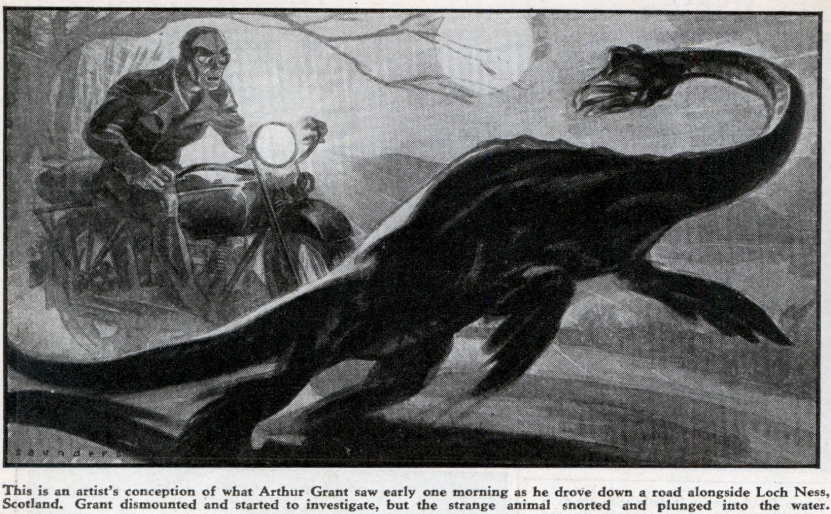

Anyway… Martin and Boyd’s investigating of Spurling’s story led them to discover that the Wetherell family still owned a hippo foot ashtray, exactly like the one used to fake the footprints. That ashtray is today on show at the Loch Ness Centre & Exhibition, Drumnadrochit… 



To create a new monster hoax, the Wetherells and Spurling had crafted a monster head and neck, placed it on a toy submarine, and put it in the loch. They’d taken photos, somehow passed them to Wilson, and then used him as a stooge.
Due to his high social standing and love of practical jokes, he was the man for the job. Wilson hadn’t taken the photos himself, hence his vague and uncertain references regarding what happened.
So that’s the short version of the hoax story. It’s circumstantial and lacks any sort of smoking gun (where is the toy submarine, huh?). It also has that ‘deathbed confession’ tang to it, AND received a crap-ton of media attention because it was such a bold and newsworthy claim…
For these reasons, many people – including several writers who specialise on monsters and the #LochNessMonster in particular – have expressed strong suspicion and even claimed that the hoax claim was itself a hoax. 
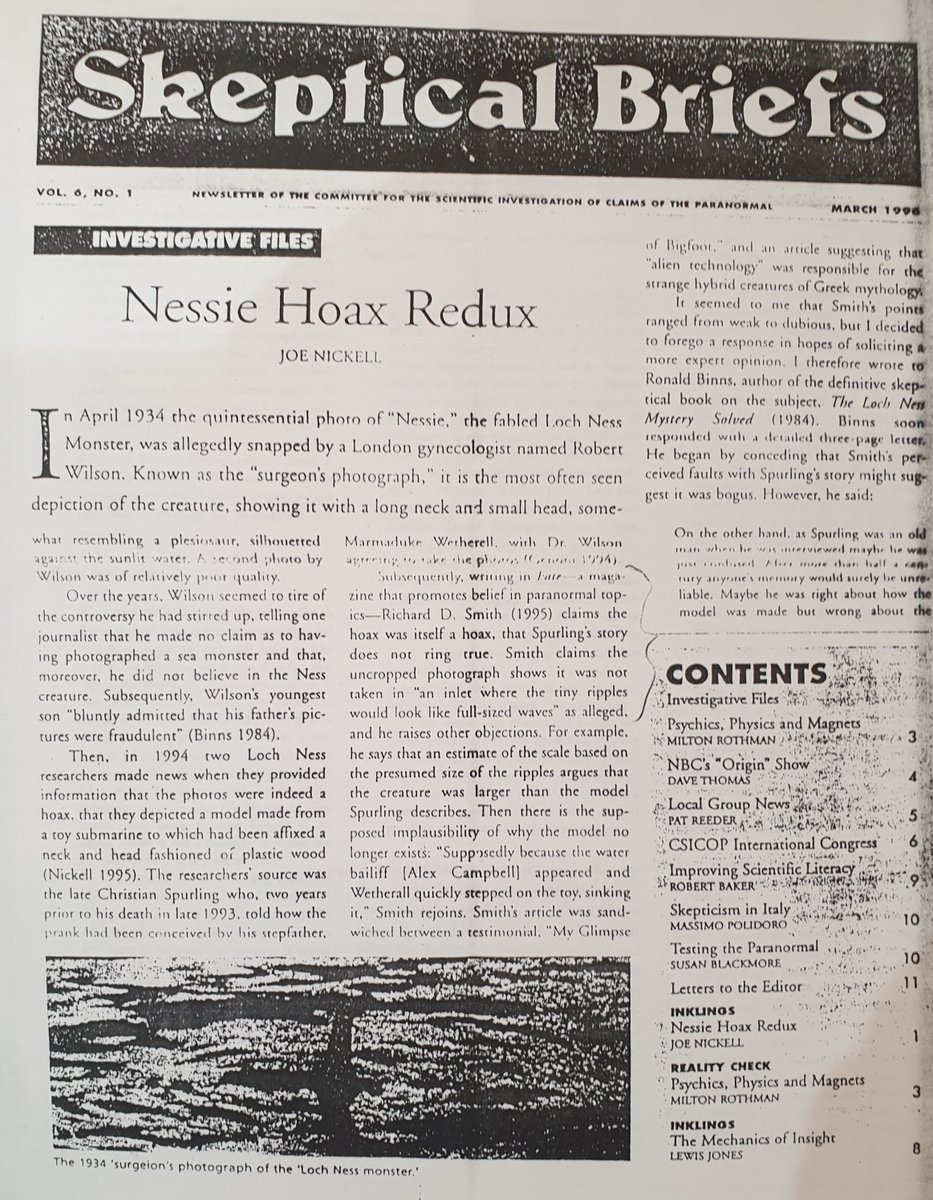
A few writers have argued that the objects needed for the story to be true (like model submarines and mouldable ‘plastic wood’) simply weren’t available in the early 1930s…
I myself have long been sceptical of the Spurling explanation, it part since it seemed like a convenient easy explanation that’s just as anecdotal as Loch Ness Monster encounters themselves. My take on it in my #cryptozoology book Hunting Monsters is a bit luke-warm. 

However, I’d made the mistake of basing my take on the Spurling story from newspaper articles, not from the book on the story. I aim to rectify this in a later edition. The book concerned is David Martin & Alastair Boyd’s 1999 Nessie: the Surgeon’s Photograph Exposed… 
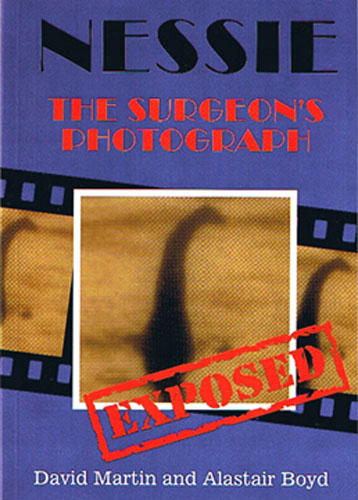
It turns out that there are references to the hoaxed nature of the Wilson photo substantially pre-dating Spurling’s ‘confession’ of 1993. A 1975 article in the Daily Telegraph – a gossip column...
.... penned by the anonymous Mandrake (actually author and TV critic Philip Purser) – included the story, and described Duke Wetherell’s role.
The Mandrake article stated that a London-based insurance broker called Maurice Chambers owned a wildfowl shoot at Loch Ness on which the photos were taken, and that Chambers arranged processing of the prints.
Ian Wetherell had taken the photos. Martin & Boyd investigated the Chambers angle, finding that Chambers co-leased this shoot … with Wilson. In fact, Wilson had already said this to Constance Whyte in 1955, so his link with Chambers had verification outside the Mandrake article.
The 1975 Mandrake article also quoted Ian Wetherell saying that the original included the far side of the loch, which is important because the loss of the uncropped image between the 1930s & 80s meant that this detail can only have been known to those with a close connection. 
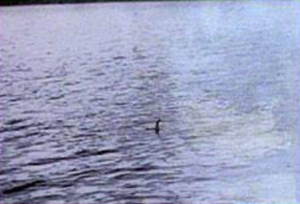
It also transpired that Nicholas Witchell (best known today as a BBC Royal Family correspondent, but also an avid Loch Ness Monster investigator) owned correspondence from Major Norman E. Egginton in which Egginton explained that a 1940 Wilson had... 

.... secretly told him and 2 others how he’d been involved in this hoax. This correspondence came from 1970 (again, long pre-dating Spurling’s ‘confession’ of 1993) and wasn’t followed up (by Witchell – only 17 at the time! – or anyone else) until Martin & Boyd tracked it down.
In fact, literary critic Richard Whittingdon-Egan had also described in correspondence in 1974 how Wilson had said that the photo was a hoax; Whittingdon-Egan had heard this from two sources.
One was Egginton, the other was zoologist Maurice Burton, well known for his interest in the #LochNessMonster. Letters which Burton wrote in 1963 and 1964 affirm that he’d heard about Wilson’s confession.
MORE relevant correspondence is included in Martin & Boyd’s book, all of which backs up Spurling’s take on events. Also, claims that toy submarines and plastic wood were not available in the early 1930s are false...
.... both objects existed and were certainly available to the wealthy, London-based people involved in this story (here's a 'plastic wood' advert from 1928)... 

As an aside, I should add that there’s a 1992 claim from a retired music teacher called Lambert Wilson (no relation to R. K. Wilson) that HE hoaxed the photo, though his story is less credible and lacks backing... 

... He said that the monster was actually part of a costume that he wore while swimming. I should add that I pre-empted this via this cartoon featuring cryptozoologist Jon Downes. But, no, sorry, I just don’t believe this proposal! 

Also of interest is the argument (from Dick Raynor, and repeated by me) that wires are visible in the photo. It’s hard to be 100% sure that they’re there, but it _looks like_ they’re connected to the stern and bow of the object. #LochNessMonster 
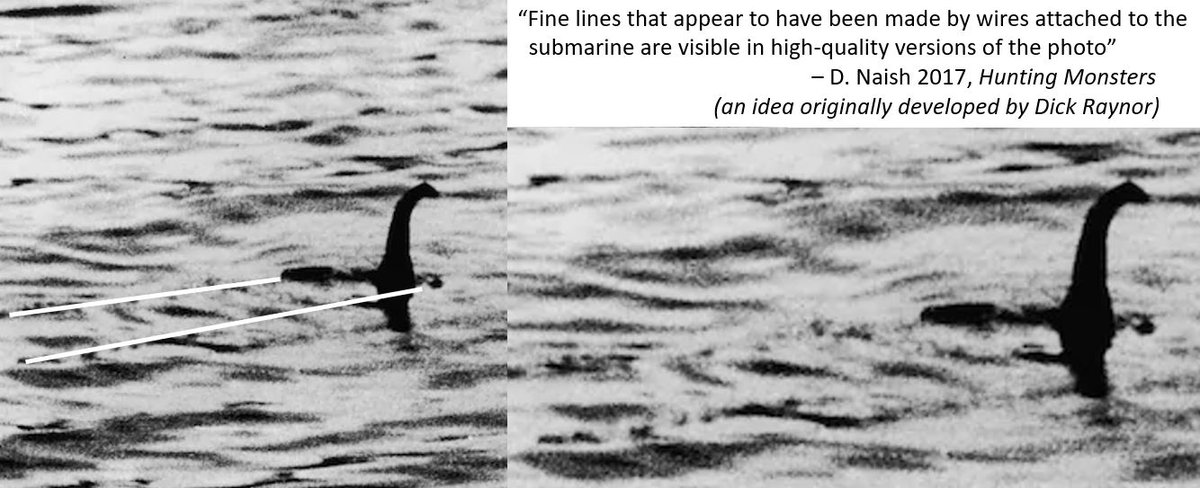
I’d prefer it if these wires had been mentioned by Spurling in the information he gave to Martin and Boyd, but I'm pretty confident that they're there...
The Spurling ‘confession’ – which states that he, Duke and Ian Wetherell – took hoax Nessie photos at #LochNess, passed them – via Chambers – to Wilson, who then posed as the photographer even though he never was...
... thus comes to us from at least three other sources, and matches up with numerous lines of investigation. 




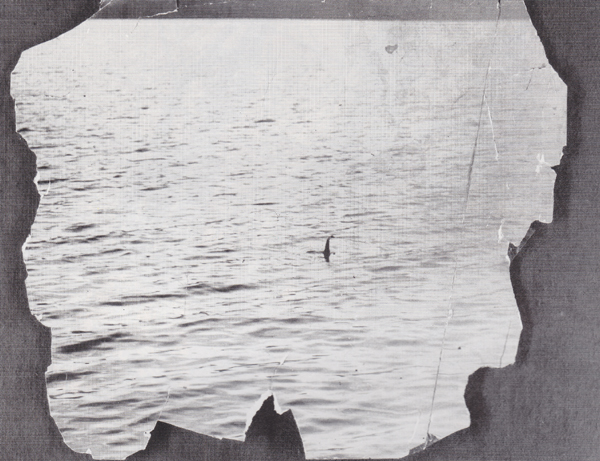
It isn’t inconsistent and matches what’s shown in the several versions of the photo that exist. For these reasons, I think it explains well what actually happened, and I wish I’d been fairer to Martin & Boyd’s case in my various monster-themed writings.
Buy their book if you want the full story! (though... it's now hard to get). And this is the end of the thread, thanks for reading! I have to thank Adrian Shine and Dick Raynor for help and advice on issues covered here. #LochNess #LochNessMonster #nessie #cryptozoology 




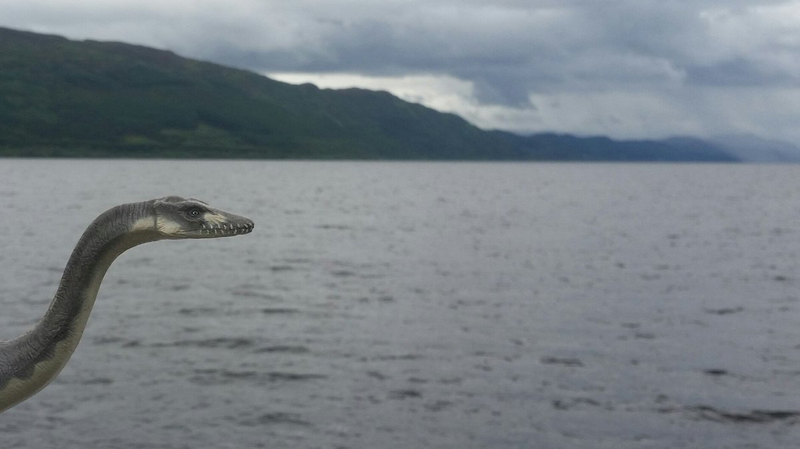
Typo at top of thread: "head and head" was of course meant to be "head and neck".
• • •
Missing some Tweet in this thread? You can try to
force a refresh


